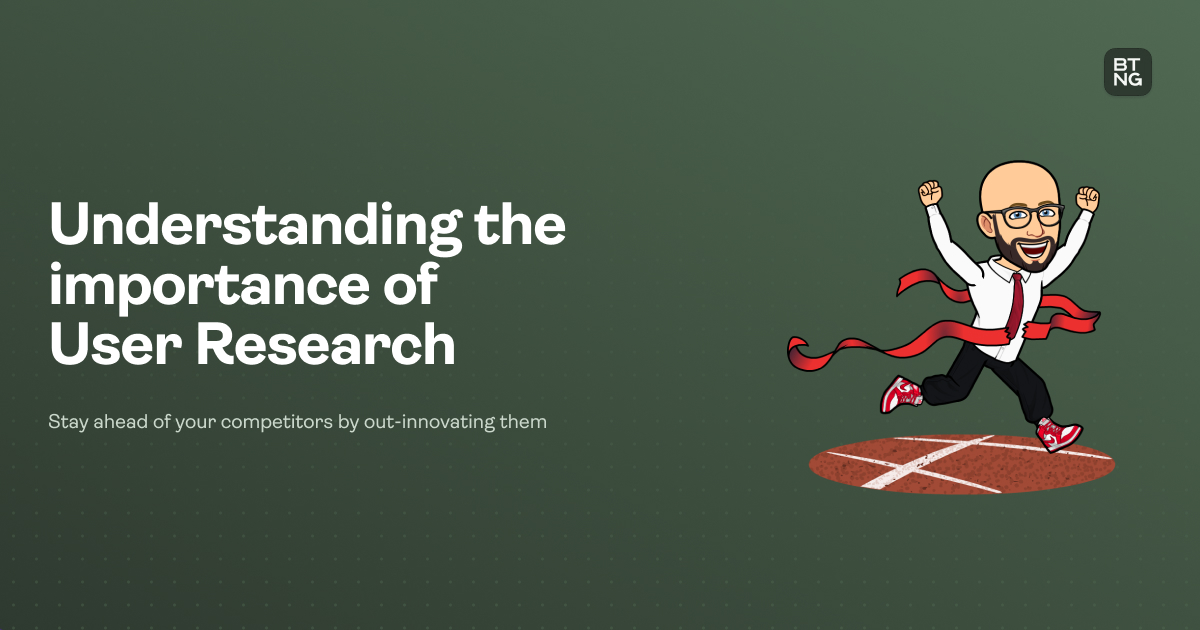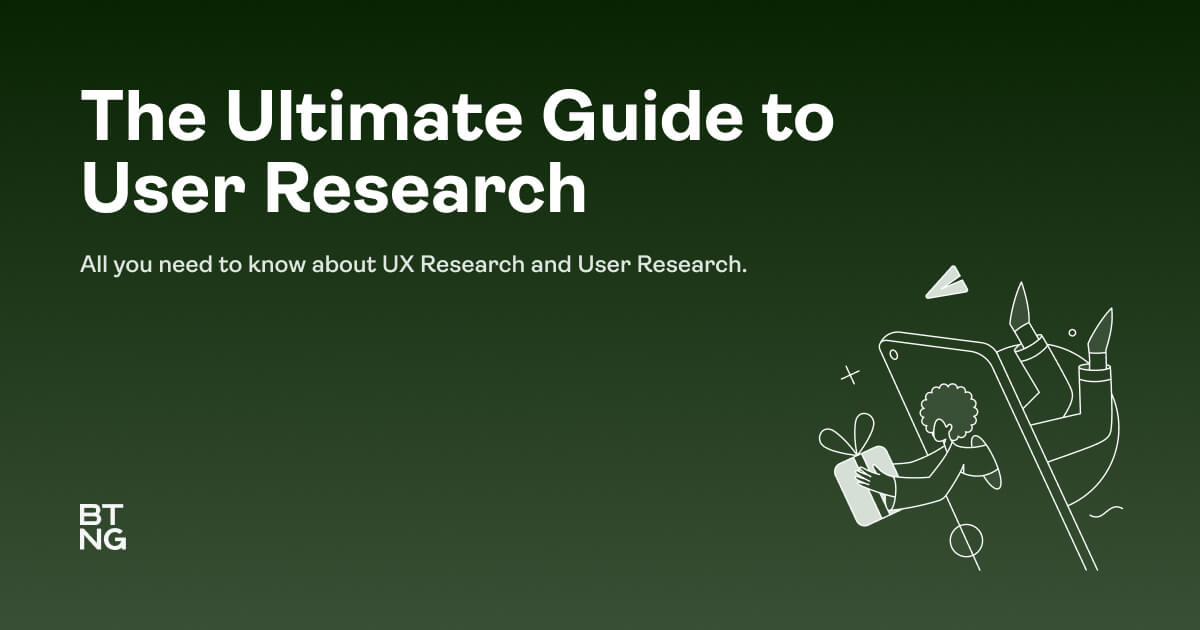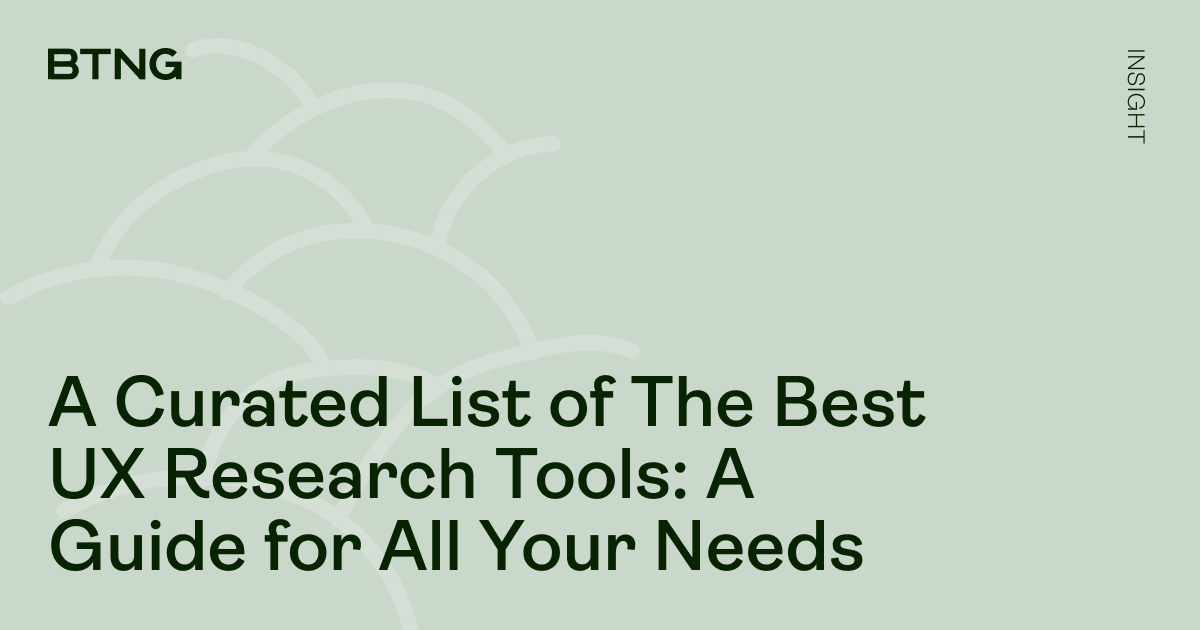The Most Common UX Research Methods
Overwhelmed and confused about which UX Research Method is useful for your situation? In this article we help you pick the right UX Research Method!

UX Research Methods are a vital part of UX Design. UX Research is how researchers gain insights from people who use or could eventually use the product. This can be done through different research methods, some more common than others. This article will discuss what these UX Research Methods are and how they may help you improve your digital service or product!
What are UX Research Methods?
UX Research Methods are a set of different UX methods that helps a business to understand their target audience better. The UX Research can be carried out in many ways, whether through observations, interviews, or surveys; the goal is to gain valuable insights from users who use or could use your product in the future.
UX Research usually starts at the beginning of the UX process when you have just an idea for a new Product or Service. Before beginning any design work, you need to know if there is demand for what you're designing or how to ideate and validate your ideas to get an edge on the competition!
To find ideas, find problems. To find problems, talk to people.
Common UX Research Methods
Depending on the UX project, you can use various research methods to identify challenges and opportunities. This can variate from user interviews, usability testing, A/B testing, and more. What they have in common is that they all originate from the same key methodologies: observation, understanding, and analysis.

User Interviews
User interviews are a highly qualitative UX Research Method. They are relatively simple to set up but can be a bit more challenging during an interview because you have to identify who will give you unbiased answers about what they think of your product or service. You also want them talking as much as possible without any input from yourself - this makes sure that there isn't any bias coming through on the UX designer conducting these user interviews!
When to use it?
User interviews are great for getting feedback directly from stakeholders and users to understand their in-depth needs, which is key as a UX researcher. User interviews are the best method for gathering new insights and fully understanding all of the pain points involved with problems your company's customers or potential new customers and gaining new insights.
How to do User Interviews
A simple interview guide - don't overcomplicate the process! Prepare the questions and make sure you only ask open-ended questions. This way, you make the user think and open up instead of just answering yes or no. Don't ask anything you don't need or could answer from other UX Research Methods. The main goal of a user interview is to understand people's behaviours, preferences, mindsets in specific contexts. Asking too many questions will increase your response rate (people love talking about themselves) but decrease the quality of responses since they'll start faking answers or just won't have enough time for all these open-ended questions. Also, keep in mind that UX Research Participants are giving up their precious time, so make sure to get the most out of the time you have!
The results
Conducting 6-12 interviews should provide you with enough pain points and insights to give you enough direction for what to focus on for your product. If the main pain points are clear, you can consider doing more in-depth interviews to explore those topics in even more detail.

Usability Testing
When you do UX Research, Usability Testing is one of the most important methods. Usability testing is a UX Research Method in which users are asked to carry out tasks with a product while observing how they perform; this can vary between carrying out a single task or a more comprehensive range of tasks. You can start testing the moment you have a clickable prototype ready or just some early sketches.
When to use it?
Users can encounter problems or confusion about how to carry out the task(s). If more people encounter the same type of problems, it is clear that there is an issue with the design or product. Usability tests are a great way to reveal usability issues and is the best way to find out if people can use your product, how easy they can use it, and what they think about it.
How to do Usability Testing?
First, you need to have a working prototype of a wireframe or an already working product. Create a plan for the tasks the test participants will have to carry out during the test within the prototype. The next step is to find and recruit participants who are suitable for your product and research. For more information and tips, we have an in-depth how-to recruit the right research participants. After that is all set and done, it is time to get to the testing! For the actual testing, you have the option to do it moderated or unmoderated.
Moderated Usability Testing
Moderated Usability testing is when you are conducting the UX Research session in person and gather qualitative data. You can either conduct it yourself or with a moderator who guides the user through the tasks using an interview script. The interviewer will record their observations and ask questions to get more information about what they observed during the test while still letting them continue with completing all the given tasks.
The upside to Moderated Testing is that the interviewer can have a high level of interaction with the test participants. This works especially well for more complex concepts or processes. With this method, the interviewer can guide the participant through the process and pick up on subtle behaviours and responses. The downside of this method is that it requires more time and resources compared to unmoderated testing.
Unmoderated Usability Testing
Unmoderated Usability Testing is where the participants are given tasks to complete in a website or app without any help. This type of usability test is the best way for getting quick results, answers, quantitative data, feedback or if you want to know how the participant would use the product in their natural environment.
The upside about Unmoderated Testing is that it requires less time and resources than moderated testing; it can be done anytime and anywhere. Because there is no moderator involved, the costs are way lower, creating the opportunity to run more tests, resulting in more quantitative data. The biggest downside to this type of testing is that there is no moderator to assist the participant when they get stuck by technical difficulties or if they don't understand the task; on top of that, it doesn't give as much qualitative data, there is no interviewer to come up with follow up questions or asking for more clarification.
The results
This user research method gives valuable insights and reveals what users don't understand and what they do understand. Besides that, the results are quantitative, depending on the chosen type of testing, and it's easy to calculate metrics such as error rates, time on task, or distance from the target. Furthermore, this testing method provides a good understanding of how users use your product in real life which is helpful for UX Designers to improve their design decisions.

Surveys
With surveys, you ask a number of questions online, for example, with an email survey form. You can include multiple-choice questions but also open-ended questions where participants have the freedom to write down their thoughts on certain topics. This method gives great insight because there are so many responses, making them very valuable when drawing conclusions from this data!
When to use it?
A user experience survey can collect qualitative and quantitative data about users' interaction or thoughts with a product. Surveys are great for gathering insight on a larger scale, so this User Experience Research method is very helpful to gather insights from many users. The data collected from this type of testing can support and complement other research methods like usability testing, A/B testing, heatmaps etc.
How to do a Survey
You can do a UX survey in many different ways. You could use a dedicated tool like SurveyMonkey, Google Forms, Typeform to create and distribute the UX surveys among your target audience, or you could also just send out an email with some questions to get direct answers from users. A good tip would be: don't ask too many questions at once since people might find it overwhelming and not answer anything at all if they feel stressed out! It's important that when setting up this User Experience Research method, you're clear about what kind of insight you want to gain by asking these specific questions so that it will help determine which UX information-gathering tools/methods are best for your project.
The results
Surveys give a clear overview of the opinions of a larger audience, which can be used to validate other Qualitative Research methods.

Card Sorting
Card sorting is a UX Research method where participants organize elements into groups that make sense to them. It's one of the most common UX Research methods because it shows what the user finds the most logical way to organize information.
When to use it?
Card sorting is a straightforward method, low effort to understand and carry out for the users and the client. The main goal of card sorting is to let users organize topic cards into categories in a way that makes sense to them. It's a great way to organize and structure your information architecture. This method is most often used to structure navigation, for example, websites or applications with a heavy menu structure.
How to do card sorting
There are three main UX Research card sorting methods: open, closed, and hybrid. They can be performed individually or in combination to get the best results depending on your needs. For example, you might want to start by asking participants of a UX test to do a free-form card sort (open type).
- Open Card Sorting: Participants are given the task to determine on their own how to categorize the cards; they are completely free to organize them in a way that makes sense to them.
- Closed Card Sorting: Participants are given a predefined set of categories and asked to sort the cards into those.
- Hybrid Card Sorting: This is a combination of open and closed card sorting where participants are given the categories and have the freedom to create their own categories.
The results
The results of this method give you a clear and right direction for your information architecture.
The takeaway
There are many User Experience Research methods available that are all potentially viable for your UX Research. In this article, we have discussed the most commonly used User Research Methods, but which UX Research Method suits best the current situation you are in? Here is a quick checklist with recommended research methods for certain situations:
What features to build?
Interviews, diary study, experience sampling, field research, online research.
In which context does a use case or a problem arise?
Diary study, field research.
Will our idea work in the real world?
Usability testing
Which design will work better?
A/B testing
Will they get the message?
Five-second tests
Which menu structure or information architecture works ideally?
Card Sorting
Take the next step to improve the UX of your project.
With more than 15 years of experience, BTNG has successfully helped major brands like ADIDAS, Lego, Philips and KLM.
Our mission is to make your user's experience the cornerstone of your success. We want you to be as passionate about it as we are.
Is there anything we can do for you at this moment? Get in touch with us, and let's discuss your current challenges.
Related Posts

How to generate UX Insights

The importance of User Research

UX Research Methods

How to recruit participants

What is UX Research




